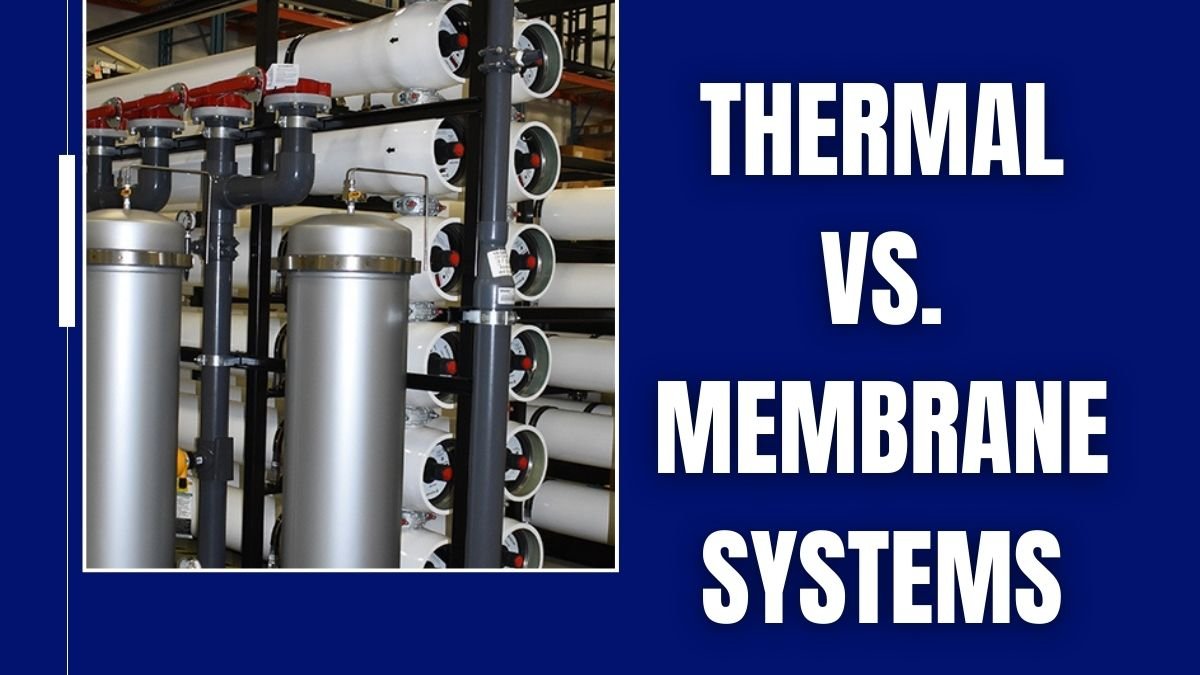Water is the basis of life, but the challenge of making salty or seawater drinkable is a major concern for the whole world. Desalination, the process of removing salt from water, provides a solution to this problem. Two major technologies are used for this—thermal systems and membrane systems. Both have their own advantages and disadvantages, and the biggest debate between them is about energy consumption. Now the question is, is it right to depend only on one of these two technologies, or can their hybrid solution be the way forward? Let’s understand in detail.
Thermal Systems: Method of purifying water with heat
Thermal systems heat water and convert it into steam and then cool that steam and collect it again as pure water. Salt and impurities are left behind in this process.
- Major technologies:
- MSF (Multi-Stage Flash): In this, water is heated and taken to a vacuum chamber. Due to a sudden decrease in pressure, water rapidly turns into steam.
- MED (Multi-Effect Distillation): It has several stages. The steam produced in one stage heats the water in the next stage. This makes better use of energy.
- Source of energy: Thermal systems require a huge amount of heat energy to run. This is its biggest weakness because for this either fossil fuels have to be burnt or heavy electricity has to be consumed.
- Limitations: The thermal process can work on a large scale, but it consumes a lot of energy. This is the reason why today many countries are slowly distancing themselves from them.
Membrane Systems: Technology based on pressure and filters
In membrane systems, water is passed through a special membrane (semi-permeable membrane), which allows only water molecules to pass through but stops salt and other impurities.
- Major technologies:
- RO (Reverse Osmosis): This is the most used technology. In this, high pressure is created, due to which water passes through the membrane and the salt is left behind.
- ED (Electrodialysis): In this, salt ions are passed through the membrane using electricity.
- Source of energy: Membrane systems require electrical energy to run. Especially in RO, a lot of electricity is spent to run the pump.
- Advantages: It is more energy efficient than thermal and provides fresh water on a large scale at a low cost.
- Limitations: In this, the membranes have to be replaced frequently as they get damaged quickly due to dirt and salt. Also, a lot of electricity is spent to create very high pressure.
Main difference between thermal and membrane systems
- Type of energy: A thermal system requires heat, while a membrane system requires electricity.
- Process method: In thermal, water is converted into steam and then cooled, while filtration takes place in membrane.
- Efficiency: Membrane systems like RO are considered more energy-efficient than thermal.
- Cost: The thermal process is long and expensive, while membrane technology is relatively cheaper and faster.
Hybrid Solutions: Is this the future?
Today when energy crises and environmental concerns are increasing rapidly, the question arises—can a better solution be found by combining both thermal and membrane? This idea gives birth to hybrid systems.
- Membrane Distillation (MD): This is a hybrid process in which both membrane and heat (thermal energy) are used. In this, a hydrophobic membrane is used and due to the difference in temperature, water molecules cross the membrane and collect in pure form.
- Advantages:
- Energy efficiency increases.
- The quality of pure water is better.
- It is also useful in those areas where there is a shortage of electricity but solar energy or other heat sources are available.
Conclusion: Hybrid technology is the way of the future.
If we depend only on thermal systems, energy will be wasted, and if we adopt only membrane systems, electricity consumption will increase. In such a situation, the future of the world seems to be moving towards hybrid solutions.
Hybrid technology can not only reduce energy consumption but can also reduce pressure on the environment. This method will be especially useful for those countries where water shortage is severe and energy resources are limited. In the coming times, only a balanced mix of thermal and membrane systems can make desalination sustainable and economical.
